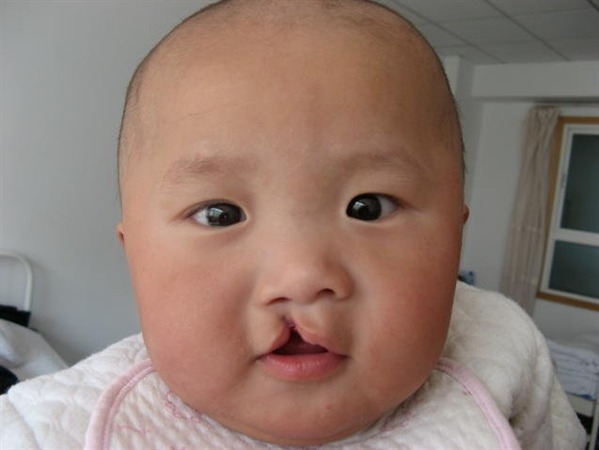
Feeding Babies With Cleft Lips And Cleft Palate
27 Mar 2018 | 4 min Read
Babychakra
Author | 1369 Articles
Feeding babies with cleft lip and palate can be challenging as well as heart breaking for a mom. Understanding how the condition affects your baby can help you overcome this challenge with ease.
What is cleft lip and cleft palate?
These are birth defects that occur in the growing foetus during early pregnancy. A cleft lip occurs due to incomplete fusion of the upper lip, resulting in a narrow defect in the lip, which can sometimes reach up to the nose. A cleft palate is a similar defect involving the roof of the mouth. These defects can involve one side (unilateral) or both sides (bilateral) of the mouth.
These defects give rise to several problems in the growing baby, including feeding difficulty, ear infections, speech and dental problems, etc.
What causes cleft lip and palate?
No specific cleft lip and palate causes are known today. Research shows that it is due to a combination of genes and environmental factors during pregnancy. Smoking, certain drugs, and diabetes have all shown to increase the chances of having a baby with cleft lip or palate.
What kind of problems are seen in babies with cleft lip and cleft palate while feeding?

For breastfeeding to be effective, the baby should be able to create a vacuum inside the mouth and place the tongue firmly in position. The vacuum is formed when the lips are tightly sealed around the nipple and the back of the mouth is closed with the soft palate. When this is done correctly, the nipple remains in proper position on the back of the tongue, and the baby is able to suck properly and breastfeed with ease. The same holds true for bottle feeding too.
Babies produce a natural reflex action while sucking, breathing and feeding and forming a vacuum. When a baby is born with cleft defects, it becomes difficult to feed as they are unable to suck properly. Moreover, milk and other liquids can leak from the open palate into the nose, leading to breathing difficultiesand repeated nose infections.
How to feed babies with cleft lip and palate ?
Babies born with cleft palate need extra help to be fed, which can be in the form of special milk bottles and teats or in certain cases, a nasogastric tube. If the baby is born with a cleft lip, the shape and size of the cleft can affect the chances of forming a good seal around the breast or bottle.
Some common methods to help the baby feed easily even with a cleft lip and palate are:
- Know the difference between dummy sucking (only breathing and sucking air) and effective suckling, where the baby breathes and swallows. This can be achieved with the help of a lactation consultant.
- The lactation or feeding specialist can consult the mother to try out a new approach to breastfeeding.
- A differently shaped teat with the hole placed at a different spot can also be of help.
- There are special bottles like MAM or Dr. Brown’s bottles that are used for babies with cleft defects.
- Sometimes, a thin tube known as a nasogastric tube may be passed into the stomach. It is usually indicated for babies with a smaller mandible which is seen in conditions like Pierre Robin sequence.
- In some cases, the baby may be given a plate to wear on the roof of the mouth. This is designed by an orthodontist so that the delicate oral tissue is not damaged.
Babies with cleft problems are more vulnerable to tooth decay as they get older. This is because it becomes difficult to clean the teeth in a crooked position. It is advised to visit the dentist regularly to maintain oral hygiene.
In general, there is no difference in timelines when it comes to weaning babies born with a cleft lip and cleft palate. Babies with cleft defects can begin eating solid foods at the same age at other babies, which is at 6 months. Cup feeding can also be given from 8 to 12 months.
Consult a feeding or lactation specialist for more advice on lactation troubles due to cleft defects
Source of banner image: step1.medbullets
Also read: Congenital Birth Defects
Explore the entire collection of articles: Baby Care
A


Suggestions offered by doctors on BabyChakra are of advisory nature i.e., for educational and informational purposes only. Content posted on, created for, or compiled by BabyChakra is not intended or designed to replace your doctor's independent judgment about any symptom, condition, or the appropriateness or risks of a procedure or treatment for a given person.
